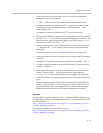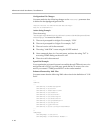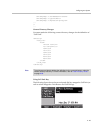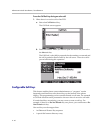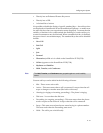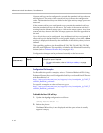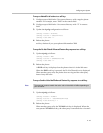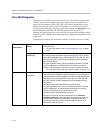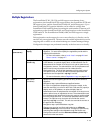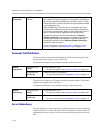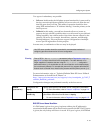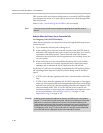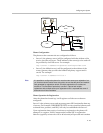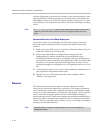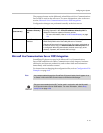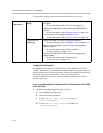
Configuring Your System
4 - 55
Multiple Registrations
The SoundPoint IP 301, 320, 330, and 430 support a maximum of two
registrations, the SoundPoint IP 501 supports three, the SoundPoint IP 550 and
560 supports four, and the SoundPoint IP 600, 601, and 650 support 6. Up to
three SoundPoint IP Expansion Modules can be added to a single host
SoundPoint IP 601 and 650 phone increasing the total number of buttons to 12
registrations on the SoundPoint IP 601 and 34 registrations on the SoundPoint
IP 650 and 670. The SoundStation IP 4000, 6000, and 7000 supports a single
registration.
Each registration can be mapped to one or more line keys (a line key can be
used for only one registration). The user can select which registration to use for
outgoing calls or which to use when initiating new instant message dialogs.
Configuration changes can performed centrally at the boot server or locally:
Central
(boot server)
Configuration file:
sip.cfg
Specify the local SIP signaling port and an array of SIP servers to
register to. For each server specify the registration period and the
signaling failure behavior.
• For more information, refer to Local <local/> on page A-6 and
Server <server/> on page A-7.
Configuration file:
phone1.cfg
For up to maximum number of registrations, specify a display name,
a SIP address, an optional display label, an authentication user ID
and password, the number of line keys to use, and an optional array
of registration servers. The authentication user ID and password are
optional and for security reasons can be omitted from the
configuration files. The local flash parameters will be used instead.
The optional array of servers and their associated parameters will
override the servers specified in sip.cfg if non-Null.
• For more information, refer to Registration <reg/> on page A-107.
Local Web Server
(if enabled)
Specify the local SIP signaling port and an array of SIP servers to
register to.
Navigate to http://<phoneIPAddress>/appConf.htm#se
For up to six registrations (depending on the phone model, in this
case the maximum is six even for the IP 601, 650 and 670), specify a
display name, a SIP address, an optional display label, an
authentication user ID and password, the number of line keys to use,
and an optional array of registration servers. The authentication user
ID and password are optional and for security reasons can be omitted
from the configuration files. The local flash parameters will be used
instead. The optional array of servers will override the servers
specified in sip.cfg in non-Null. This will also override the servers on
the appConf.htm web page.
Navigate to http://<phoneIPAddress>/reg.htm
Changes are saved to local flash and backed up to <Ethernet
address>-phone.cfg on the boot server. Changes will permanently
override global settings unless deleted through the Reset Local
Config menu selection and the <Ethernet address>-phone.cfg is
removed from the boot server.



